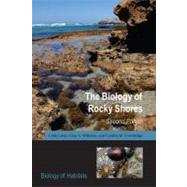
Note: Supplemental materials are not guaranteed with Rental or Used book purchases.
Purchase Benefits
What is included with this book?
| Preface | |
| The shore environment | |
| The diversity of shore organisms | |
| Coping with life on the shore: adaptations of littoral organisms | |
| Primary producers on the shore: the autotrophs | |
| Utilizing autotrophic resources: the grazers | |
| Suspension feeders: how to live on floating food | |
| Eating flesh: the predators | |
| Vertical distributions: 'zonation' and its causes | |
| How organisms are gathered together: communities on the shore and the effects of wave exposure | |
| The functioning of rocky shore communities | |
| Human influences on rocky shores | |
| Methods and experimental approaches | |
| Appendix: Name changes of ecologically important taxa | |
| Further Reading | |
| References | |
| Index | |
| Table of Contents provided by Publisher. All Rights Reserved. |
The New copy of this book will include any supplemental materials advertised. Please check the title of the book to determine if it should include any access cards, study guides, lab manuals, CDs, etc.
The Used, Rental and eBook copies of this book are not guaranteed to include any supplemental materials. Typically, only the book itself is included. This is true even if the title states it includes any access cards, study guides, lab manuals, CDs, etc.